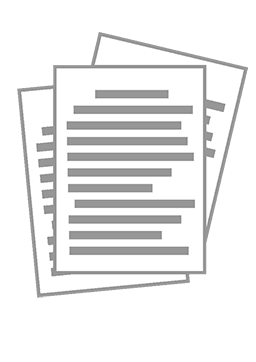Extras din seminar
Course objectives
By the end of the course, teacher trainees will be able to:
a) understand and use correctly concepts and terminology for describing language (grammar, lexis, phonology and functions) and for describing language skills and sub-skills, e.g. reading for gist, scanning;
b) understand and critically analyse the process of language learning;
c) understand and critically analyse the process of language teaching;
d) plan and prepare their lessons appropriately;
e) select, adapt and use materials, resources and aids necessary in the process of teaching/learning English;
f) use and teach students to use appropriate language in the classroom;
g) manage their classes effectively.
English Language Teaching Methodology. Course syllabus
1 Describing language and language skills
1.1 Grammar (parts of speech; the forms and use of grammatical structures),
1.2 Lexis (types of meaning, word formation - prefixes, suffixes, compounds - ; word groupings - synonyms, antonyms, lexical sets, homophones, collocation - ; register),
1.3 Phonology (symbols from the International Phonetic Alphabet - IPA); phonemes, word stress, sentence stress, intonation and connected speech)
1 Describing language and language skills
1.4 Functions (context; levels of formality; appropriacy; a range of functions and their typical exponents)
1.5. Language skills and their subskills (reading, listening, speaking, writing; features of spoken and written texts, e.g. layout, organisation, accuracy, fluency, authenticity)
2. Background to language learning
2.1 Motivation (influences on motivation; the importance of motivation; measures that can increase motivation),
2.2 Exposure to language and focus on form (acquisition; silent period; L2 learners’ need for interaction and focus on form as complements of exposure),
2.3 The role of error (errors and slips; interference and developmental errors; interlanguage),
2. Background to language learning
2.4 Differences between L1 and L2 learning (differences in age; differences in the context of learning; differences in ways of learning),
2.5 Learner characteristics (common learning styles and preferences; common learning strategies; maturity; past language learning experiences; how learner characteristics affect learning),
2.6 Learner needs (the personal, learning and (future) professional needs of learners)
3 Background to language teaching
3.1 Presentation techniques and introductory activities: (introductory activities such as warmers, lead-ins; common ways of presenting language);
3.2 Practice activities and tasks for language and skills development (the design and purpose of a range of common comprehension and production tasks and activities; teaching terms, e.g. prompting, eliciting, drilling; frameworks for activities and tasks:- Presentation, Practice and Production (PPP); - Task-based Learning (TBL); - Total Physical Response (TPR); - The Lexical Approach; - Grammar-Translation; - test-teach-test; - guided discovery);
3 Background to language teaching
3.3 Assessment types and tasks (purposes for assessment - diagnostic, placement, achievement, formative, progress, proficiency -; methods of assessment - self, peer, portfolio, informal and formal - ; the design and purpose of a range of assessment tasks and activities)
4 Planning and preparing a lesson or sequence of lessons
4.1 Identifying and selecting aims appropriate to learners (main, subsidiary and personal aims; specification of aims; factors influencing the choice of aims),
4.2 Identifying the different components of a lesson plan (the standard components of a lesson plan: aims, procedures, stages, timing, aids, anticipated problems, assumptions, interaction patterns, timetable fit);
4 Planning and preparing a lesson or sequence of lessons
4.3 Planning an individual lesson (or a sequence of lessons) by choosing and sequencing activities appropriate to learners and aims (common sequences, e.g. structures, skills, topic, project);
4.4 Choosing assessment activities appropriate to learners, aims and stages of learning (informal or formal assessment and related tasks and activities).
5 Selection and use of resources
5.1 Consulting reference resources to help in lesson preparation (the range of resources available and teachers’ reasons for consulting them)
5.2 Selecting and using coursebook materials (criteria for selection; ways of adapting materials)
5 Selection and use of resources
5.3. Creating, selecting and using supplementary materials and activities (types of supplementary materials and activities; reasons for use; how to select and adapt them)
5.4 Selecting and using teaching aids; types of aids and their teaching functions)
6 Teachers’ and learners’ language in the classroom
6.1 Using language appropriately for a range of classroom functions, (identification of a range of classroom functions and typical exponents; appropriacy of use, e.g. degrees of simplicity of language, appropriateness of sequencing, degrees of formality, use of L1)
6.2 Identifying the functions of language used by learners in the classroom (identification of common functions and typical exponents; identification of communicative purpose; appropriacy of use)
6.3 Categorising learners’ mistakes (categorising types of mistakes, e.g. spelling, wrong verb form, subject-verb agreement)
7 Classroom management
7.1 The roles of the teacher (common teacher roles, e.g. manager, diagnostician, planner -; functions of teacher roles, e.g. managing the teaching space, establishing systems for praise and reward, establishing rules, routines and procedures; analysing learners’ needs; building variety into lessons, planning lessons to meet learners’ needs)
7 Classroom management
7.2. Grouping learners (common classroom interaction patterns and their uses; grouping of learners and reasons for this)
7.3 Correcting learners (methods of oral and written correction, and their appropriacy of use)
7.4 Giving feedback (the focus and purpose of feedback; ways of giving feedback)
Conținut arhivă zip
- English Language Teaching Methodology.ppt







